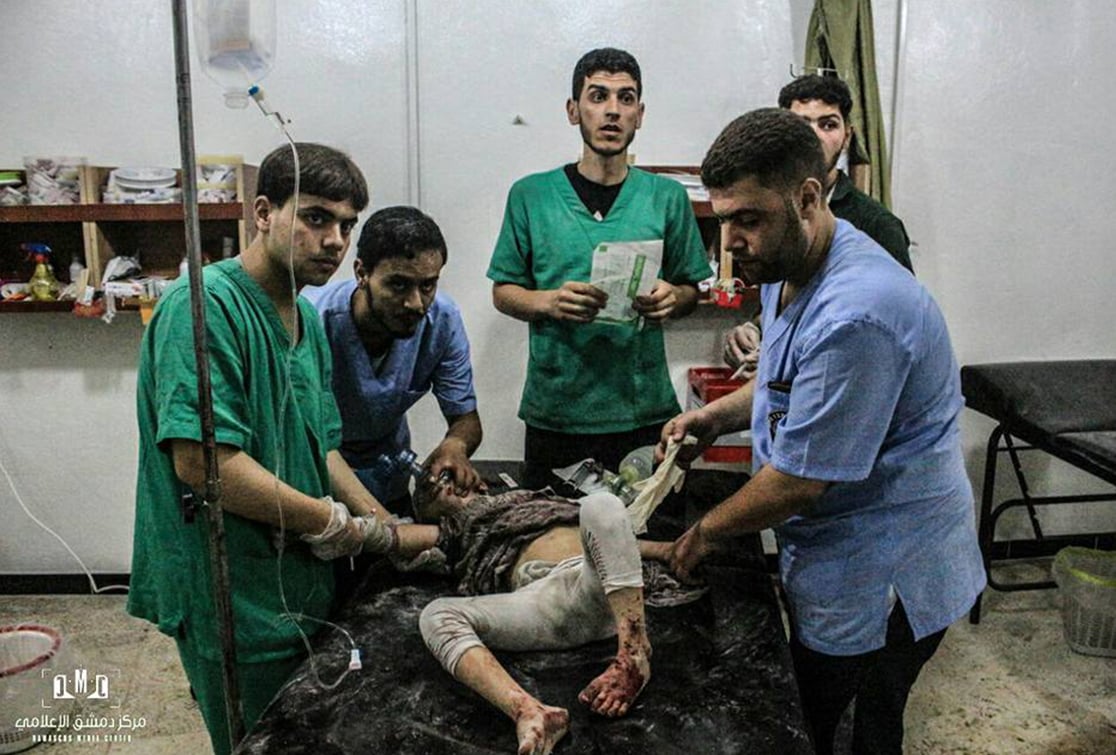Syrian Regime Forces Top all other Parties in Terms of Violations

SNHR has published its special monthly report that documents the violations against medical and civil defense personnel and their respective facilities by the parties to the conflict in Syria.
The report stresses that Syrian regime forces have been involved, since 2011, in targeting and bombing medical and civil defense facilities as well as the parties to the conflict that targeted medical and civil defense personnel in killing and arrest operations. This indicates a deliberate policy that only aims to kill more and deepen the suffering of the wounded whether they were civilians or armed.
Fadel Abdul Ghany, chairman of SNHR, says:
“Attacks on medical and civil defense centers as well as medical and civil defense personnel are considered a blatant violation of the international humanitarian law and constitute war crimes given the chaotic, and in many cases, deliberate, targeting of protected objects. All of this have only deepened the suffering of the wounded and injured and is one of the main reasons behind the displacement of the Syrian people as it sends a very clear message: there is no safe area, or a red line, including hospitals, you either flee or perish”
The report highlights the de-escalation agreement in Syria, which commenced on May 6, 2017, after it was announced at the end of the fourth round of Astana talks which was held between representatives from Russia, Turkey, and Iran as the states that sponsored Ankara Ceasefire agreement. The agreement outlined four major de-escalation areas, where a cessation of combat operations will take place in these areas, humanitarian aids will be delivered, and IDPs residents will be allowed a return to these areas. These areas, as specified by the agreement, are: Idlib governorate and the surrounding areas (parts of Aleppo, Hama, and Latakia governorates), northern Homs governorate, Eastern Ghouta, and parts of Daraa and al Quneitra governorates in the southern parts of Syria. It was provided that an expert committee would accurately assign the borders of said zones at a later date.


